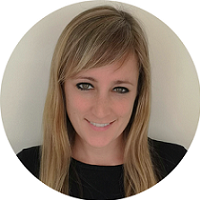 And Solutions Shouldn’t be Either
And Solutions Shouldn’t be Either
By Dr. Rachael Grimaldi, CEO/Co-Founder, CardMedic
Twitter: @cardmedic
Despite being home to some of the world’s leading healthcare systems and research institutions, patients in the United States still face poor health outcomes in many areas. For example, the U.S. has the highest maternal mortality rate compared to other similarly resourced countries. Patients in the U.S. also face incredibly high rates of chronic diseases, including heart disease, high blood pressure, diabetes, leading to many more serious conditions like heart attack and stroke. While there are certainly many factors contributing to these poor health outcomes, in some cases the root cause can be linked back to miscommunication in healthcare delivery.
For example, if patients are not able to effectively communicate with their clinicians, they are also less likely to be able to understand and follow a treatment plan, which can lead to more severe consequences. Communication barriers can also cause mistrust between patients and their providers – and if the patient doesn’t trust their doctor, they may be less inclined to take their advice. Underscoring all of this is the fact that communication challenges have only been exacerbated by clinician burnout over the past three years.
There is a clear need to address these challenges — but first, we need to discuss the true breadth of communication barriers in healthcare around the country.
Language and communication barriers are linked to poor health outcomes
One of the clearest causes of communication challenges in healthcare is language barriers – whether that is speaking a different language from their provider, or a cognitive or physical disability that impairs the patient’s ability to communicate.
There are hundreds of languages spoken in the United States. 21.6% of Americans use English as a second language and 8% are Limited English Proficient (LEP). That means one in five people have additional communication needs in the healthcare setting. Unfortunately, these patients often experience worse health outcomes and lower satisfaction due to the communication challenges they face.
Additionally, there are 16 million adults in the U.S. living with a disability – representing around 26% of the population. More specifically, 5.9% of U.S. adults are deaf or have serious difficulty hearing, 4.6% have a severe vision disability, and 10.8% have a cognitive disability. Not only does research show that people with disabilities experience worse health outcomes, but they also receive a lower quality of care and a higher risk of adverse events — which can often be linked to providers not having the resources to communicate with the patient.
Translator services don’t always suffice
There are, of course, translation services in healthcare — both in person and via telephone or video services – which, when available and used appropriately, are incredibly helpful. However, there are many situations in which translator services fall short.
Studies show that only 56% of American hospitals offer linguistic or translating services. That means almost half of the hospitals in this country do not have services available, leaving patients with communication barriers either completely unable to access care or certainly at a disadvantage.
Even when hospitals do have access to translation, there can be long wait times to access the services. One area where this presents the clearest challenge is in the emergency setting where clinicians often do not have time to wait to begin treatment — but limits a patient or their family’s ability to communicate with the doctors and give fully informed consent.
Of course, there are a host of other instances where translation services may prove inadequate for meeting patients’ needs. If a patient speaks a less common language, there is no guarantee there will be a translator available to speak that language. There are also other circumstances in which translator services may not be effective in bridging the gap between patients and their providers — for example, when it is a sensitive or emotional situation, they may not feel comfortable sharing with an interpreter, especially if it is through the phone.
Health literacy rates in the U.S. are extremely low
The problem of miscommunication in healthcare extends much farther than the language barriers we have discussed so far. When it comes to understanding healthcare information, the statistics are staggering — 88% of adults in the U.S. have a health literacy level that is lower than they would need to properly navigate the U.S. healthcare system and advocate for themselves in a healthcare setting. That means nearly nine out of every 10 people struggle with healthcare communication.
Another communication challenge that U.S. patients face is that not all digital healthcare tools are designed to be accessible for all literacy levels. Much of the copy found within healthcare apps and other communication tools are written above the average U.S. adult’s reading level, which is below a sixth grade reading level for a majority of the country.
Communication barriers in healthcare are an enormous issue that have extreme consequences, and it is imperative that we spread awareness of them in order to spark real change and close the gap. To do that, we can’t just focus on language barriers — healthcare providers need to ensure that instructions are clearer and presented in a way that is easy to understand and with less jargon. They also need to be easily accessible for people with disabilities. Communication is truly the foundation of good healthcare — and we need to focus on finding solutions to improve communication for all.
Learn more about Dr. Rachael Grimaldi
On The Incrementalist host Dr. Nick van Terheyden aka Dr. Nick, talks to The Accidental Entrepreneur and co-founder and CEO of CardMedic, Rachael Grimaldi, MD. Rachael started the company in the height of the pandemic and on maternity leave. Motivated by the desire to improve health literacy and health inequities she pulled together from a concept to launch her product online. Take a listen!
